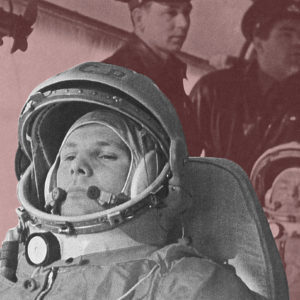The First To Reach The Moon
Luna 1 was the first spacecraft to reach the Moon, and the first of a series of Soviet automatic interplanetary stations successfully launched in the direction of the Moon. The spacecraft was sphere-shaped. Five antennae extended from one hemisphere. Instrument ports also protruded from the surface of the sphere. There were no propulsion systems on the Luna 1 spacecraft itself. Because of its high velocity and its announced package of various metallic emblems with the Soviet coat of arms, it was concluded that Luna 1 was intended to impact the Moon.
Objective
The primary objectives of the mission were to measure temperature and pressure inside the vehicle; study the gas components of interplanetary matter and corpuscular radiation of the Sun; measure the magnetic fields of the Earth and moon; study meteoric particles in space; study the distribution of heavy nuclei in primary cosmic radiation; and study other properties of cosmic rays.
Flight
On 2 January 1959, after reaching escape velocity, Luna 1 separated from its 1472 kg third stage. The third stage, 5.2 m long and 2.4 m in diameter, travelled along with Luna 1. On 3 January, at a distance of 113,000 km from Earth, a large (1 kg) cloud of sodium gas was released by the spacecraft. This glowing orange trail of gas, visible over the Indian Ocean with the brightness of a sixth-magnitude star, allowed astronomers to track the spacecraft. It also served as an experiment on the behavior of gas in outer space. Luna 1 passed within 5995 km of the Moon’s surface on 4 January after 34 hours of flight. It went into orbit around the Sun, between the orbits of Earth and Mars.
The spacecraft contained a 19.993 MHz system which transmitted signals of 50.9 second duration, a 183.6 MHz transmitter for tracking purposes, and a 70.2 MHz transmitter. Four whip antennas and one rigid antenna mounted on the sphere provided the communications link. Power was supplied by mercury-oxide batteries and silver-zinc accumulators. There were five different sets of scientific devices for studying interplanetary space, including a magnetometer, geiger counter, scintillation counter, and micrometeorite detector, and other equipment. The measurements obtained during this mission provided new data on the Earth’s radiation belt and outer space, including the discovery that the Moon had no magnetic field and that a solar wind, a strong flow of ionized plasma emmanating from the Sun, streamed through interplanetary space.
The Lunar Programme
Lunar 1 was just the first of many launches in the Lunar Programme, also known as Lunik or Lunnik. The Soviet Union’s series of missions sent to the Moon went on until 1976. Fifteen were successful, each designed as either an orbiter or lander, and accomplished many firsts in space exploration. They also performed many experiments, studying the Moon’s chemical composition, gravity, temperature, and radiation.
Twenty-four spacecraft were formally given the Luna designation, although more were launched. Those that failed to reach orbit were not publicly acknowledged at the time, and not assigned a Luna number. Those that failed in low Earth orbit were usually given Cosmos designations. The estimated cost of the Luna programme was about $4.5 billion.

